Along the winding journey from Quan Ba to Yen Minh on National Highway 4C, travelers will encounter a majestic ancient tree, standing silently amidst the layered mountains. Having weathered more than 250 years of harsh elements, the tree still proudly clings to the earth, stretching its lush branches across the rocky plateau. It’s precisely this enduring vitality and solitary presence in the wilderness that earned it the name “the Lonely Tree.”
This iconic tree is known to all as the Ha Giang Lonely Tree, and its profound beauty has transformed this spot into a famous landmark for photographers and travelers. Join Phieu Travel as we explore the magnetism of this destination in the following article!
1. Admiring the Beauty of Ha Giang’s Lonely Tree
Ha Giang’s Lonely Tree is an ancient red nghien tree (Burretiodendron hsienmu) over 250 years old. Standing approximately 40 meters tall, its trunk is so massive that five people couldn’t encircle it with their arms, while its canopy spreads wide and remains green year-round. Growing from barren limestone terrain with minimal soil and water, the tree has stubbornly existed for two centuries, becoming a symbol of persistent life amidst the rocky plateau.
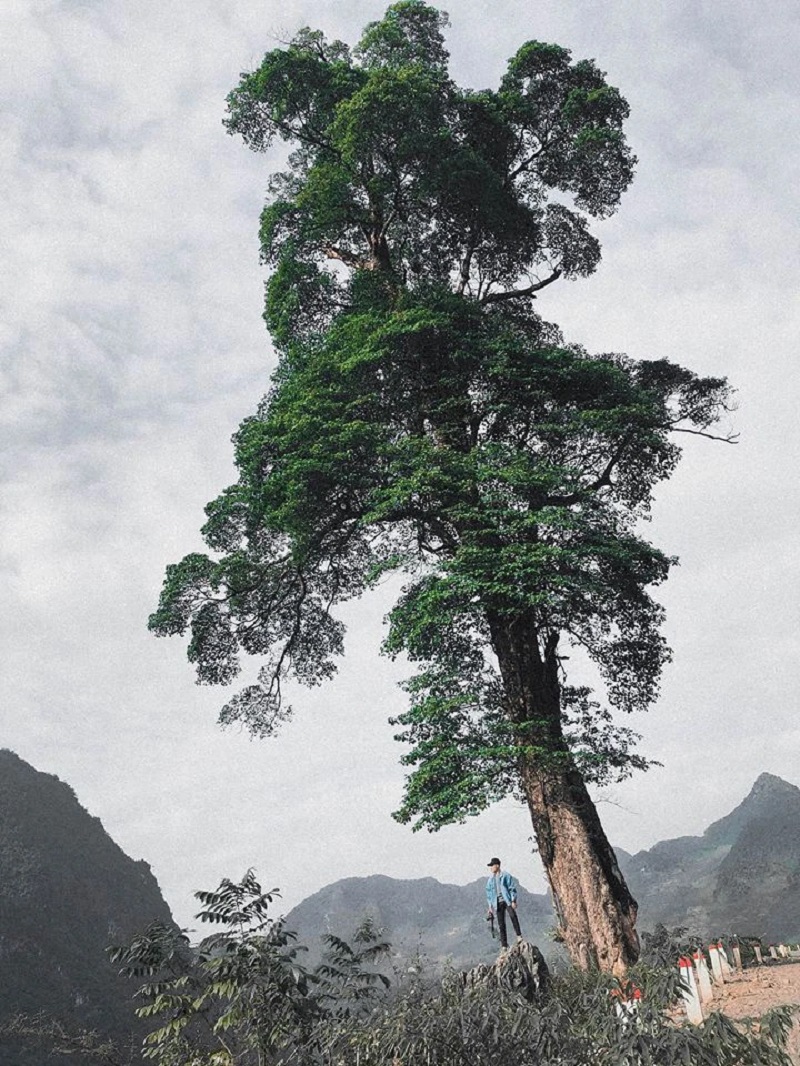
The tree grows in a precarious location, with a vertical cliff on one side and a deep abyss on the other. Its form leans slightly toward the precipice, as if stretching to embrace the wind, regardless of mist or harsh sunshine. The trunk is covered with moss, bearing the marks of time. Right beneath the tree is a small hollow that locals use to store goods during their roadside selling trips.
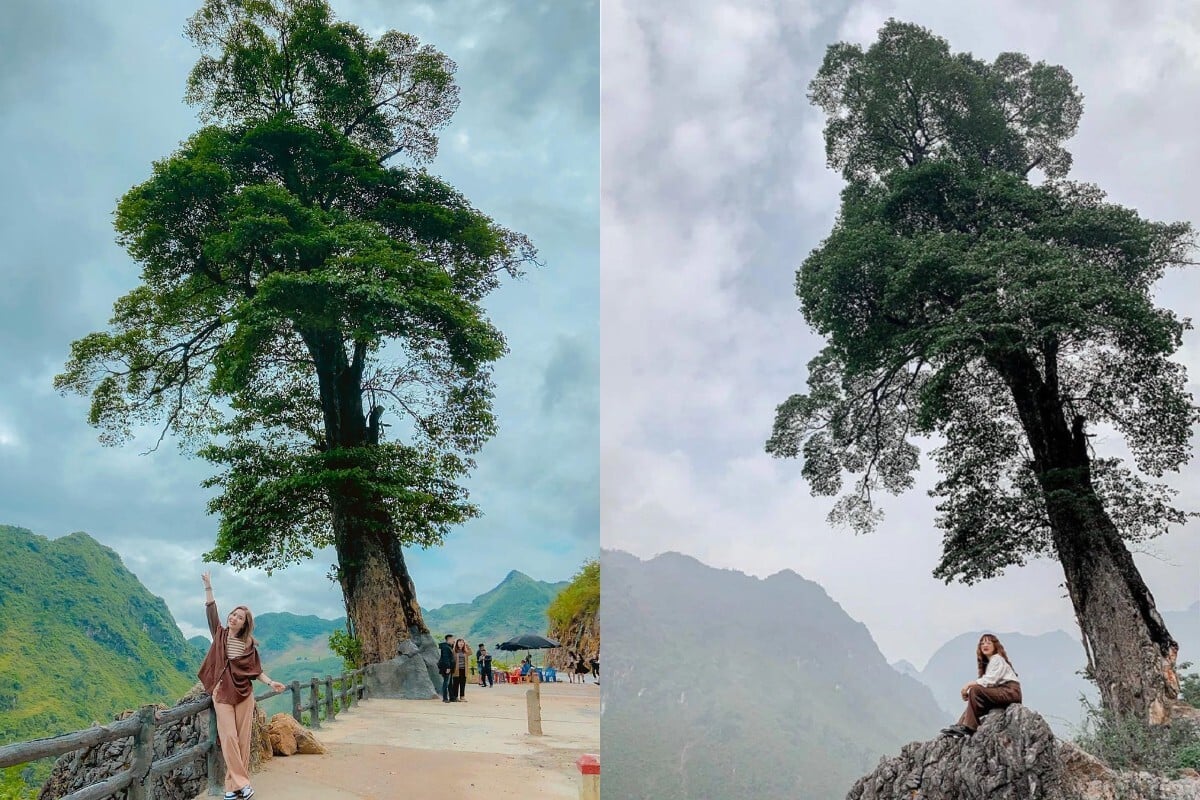
The most beautiful moment to admire the tree is at noon or early afternoon when the sky is clear and sunlight filters through the leaves, creating a peaceful, pristine scene. If you visit at sunset, the space around the tree becomes meditative and poetic, making everyone who stops want to remain silent for a moment to absorb the atmosphere.
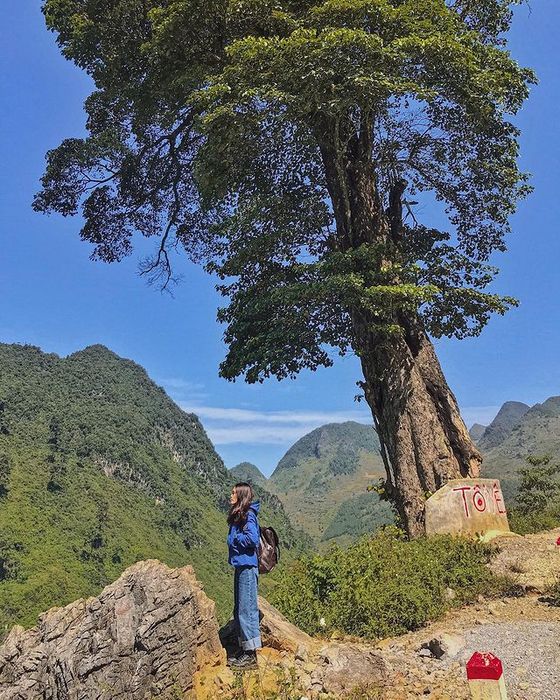
The Lonely Tree is playfully called “the silent road guardian of the borderland.” Through countless years, it has stood there, steadfast against all weather, unyielding like the spirit of Ha Giang’s people. This is why the Lonely Tree has become a living symbol that compels passersby to stop, gaze, and reflect.
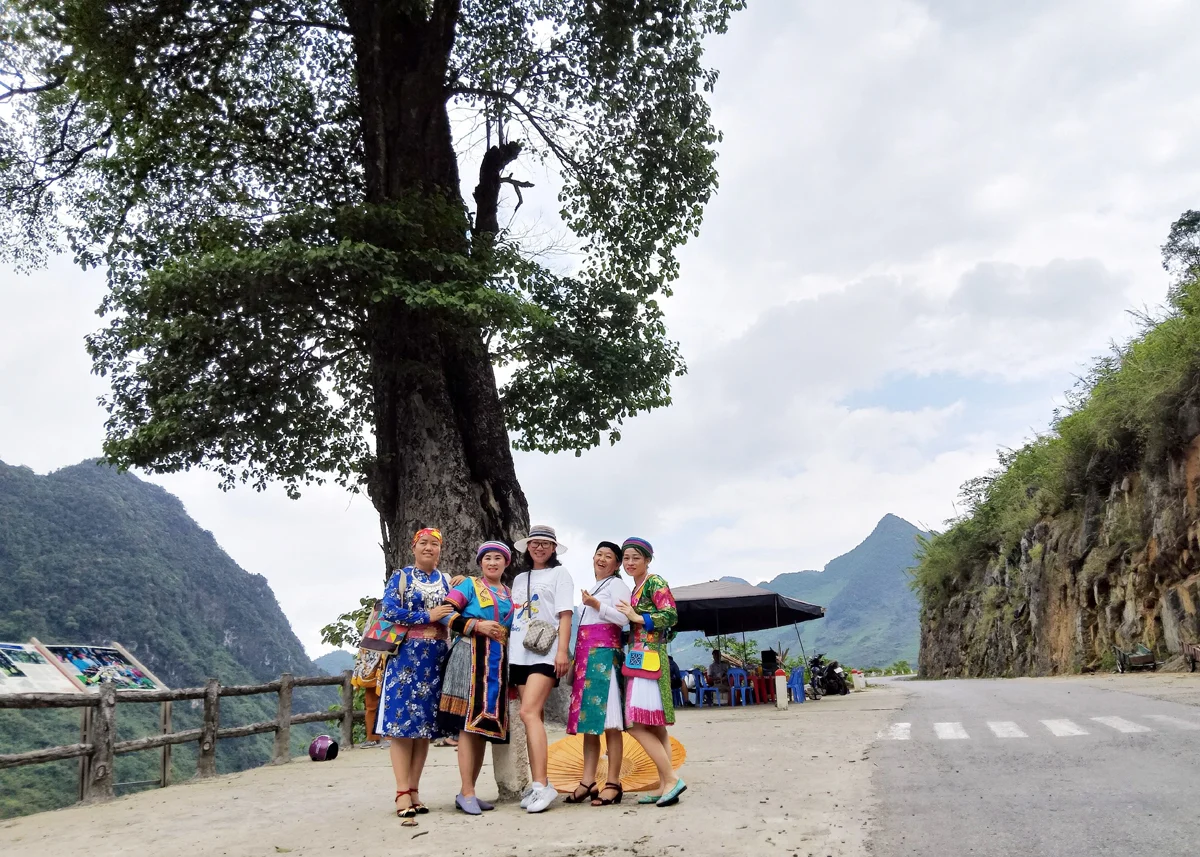
During festival seasons or when triangle buckwheat flowers bloom, thousands of tourists stop under the tree’s canopy daily to take photos and enjoy the highland atmosphere. Many couples choose the Lonely Tree as a backdrop for their wedding photos, as a way to express their wishes for an enduring and powerful love – just like the tree’s vitality.
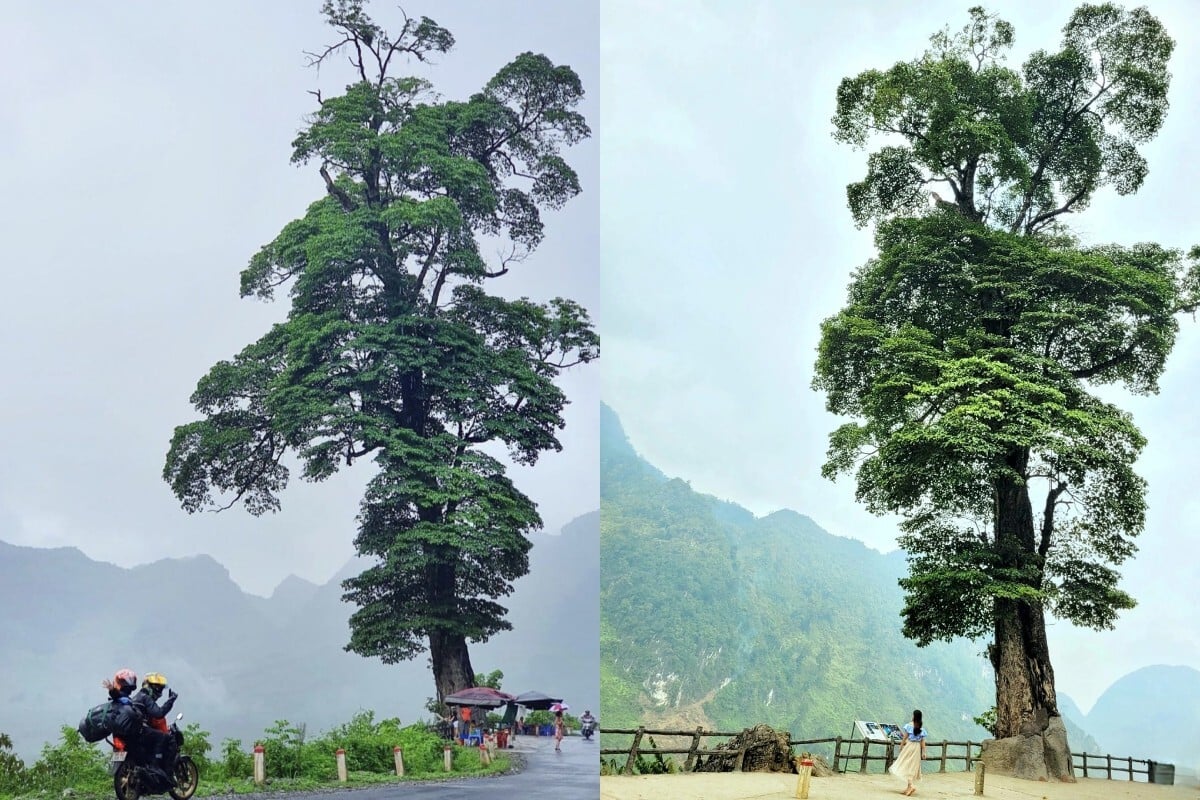
The Ultimate Ha Giang Loop Guide (2025): Itinerary, Map & Tips
2. Where is Ha Giang’s Lonely Tree Located?
Ha Giang’s Lonely Tree is located in Can Ty Commune, Quan Ba District, on the road from Quan Ba to Yen Minh. This is a newly opened route, not coinciding with National Highway 4C as many mistakenly believe. The tree’s specific location is near Lao Chai Kindergarten, right on the mountainside.
Many first-time visitors to Ha Giang miss this check-in point due to confusion about its location on maps. Since the tree stands beside a road without clear signage, it’s advisable to ask local residents or search using the keywords “Can Ty Lonely Tree near Lao Chai Kindergarten” to reach the correct spot.
3. Directions to Ha Giang’s Lonely Tree
From Ha Giang city center, drive along National Highway 4C toward Quan Ba for about 40km. During this journey, don’t forget to stop at Heaven’s Gate to admire the Fairy Twin Mountains and the golden rice valley hidden beneath the clouds.
After passing Quan Ba town, find the large gas station in the area, then turn onto the road to Nam Dam. Continue for another 2km until you reach Can Ty Bridge. Cross the bridge and continue toward Trang Kim Commune until you reach a junction. Here, turn right toward Yen Minh (22.6 km) on the newly opened road that leads directly to the Lonely Tree.
Drive another 1.7km from the turn, and you’ll see the nghien tree growing silently on the mountainside. This area has no signs or barriers, so careful observation is necessary. The tree is located near Lao Chai Kindergarten, in the middle of a quiet mountain pass section, and is easy to miss without knowing the exact coordinates.
Ma Pi Leng Pass – The Majestic Beauty of Ha Giang’s Stone Plateau
4. Famous attractions near the Lonely Tree
When visiting the Lonely Tree for a check-in, you can combine your trip with visits to other nearby Ha Giang attractions:
4.1 Quan Ba Heaven’s Gate
Quan Ba Heaven’s Gate sits atop a slope at approximately 1500m elevation, built by the French in 1939 using thick wooden planks like a door opening to the ancient rocky region. Though the original architecture no longer exists, this landmark remains the first milestone when leaving Ha Giang City toward Yen Minh. Nearby are the Quan Ba Twin Mountains, forming a landscape complex that attracts tourists.
From Heaven’s Gate, Tam Son town spreads out in the valley below, nestled between limestone mountain ranges stretching to the horizon. The unique terrain here results from geological faults millions of years ago, creating a basin between mountains and undulating karst formations. When buckwheat season arrives, pink-purple flowers bloom across the hillsides, interspersed with terraced fields and rocky hills, transforming the land into a vibrant natural painting full of life.
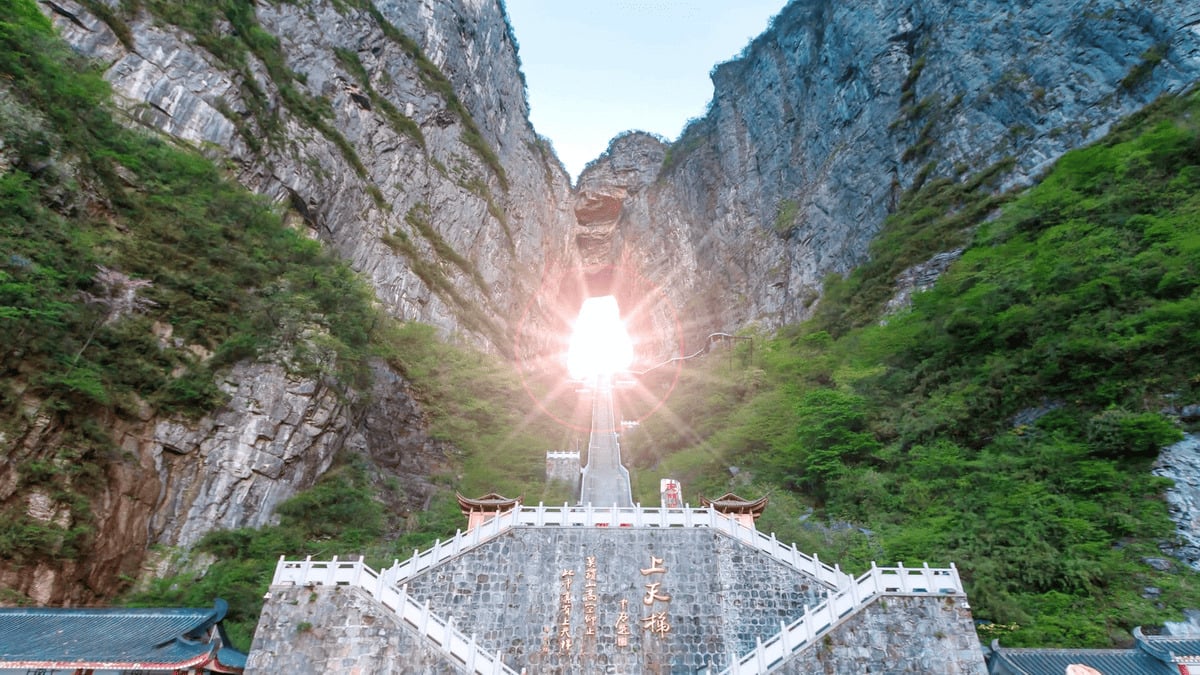
4.2 Quan Ba Twin Mountains (Fairy Twin Mountains)
The Quan Ba Twin Mountains are two symmetrical cone-shaped limestone formations, rising like two full breasts in the Tam Son valley. Viewed from Heaven’s Gate, the scenery appears harmonious and soft against the backdrop of terraced fields and drifting clouds.
Besides the name Quan Ba Twin Mountains, this place has another folk name: “Fairy Twin Mountains.” According to locals, these two peaks are the breasts left behind by a fairy for her child before departing. This legend has been preserved through generations, leaving visitors with not just impressions of the scenery but also echoes of sacred maternal love.
At the foot of the mountains lie Quan Ba district’s rice fields. These fields change color with the seasons. When rice is newly planted, green covers the fields. During harvest, golden hues spread across the mountain base. When the land rests, reddish-brown blankets the terraced fields.
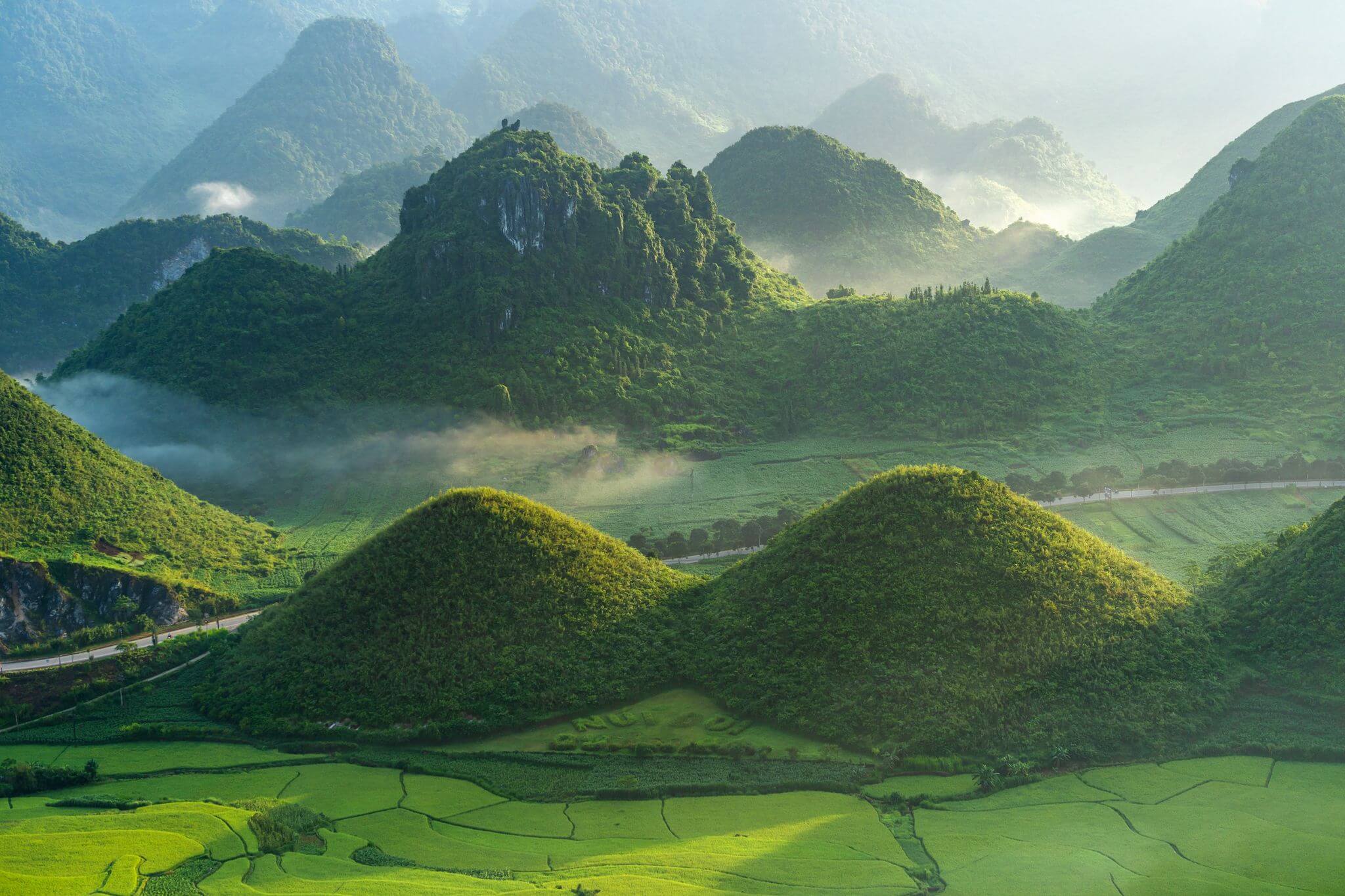
4.3 Lung Khuy Cave
Lung Khuy Cave is located in the Hmong village of the same name, nestled in the quiet limestone mountains of Quan Ba. The cave extends nearly a kilometer, featuring a high, wide dome and many branches connecting into a deep network. The entrance is quite small, with the cave mouth only about 1.5m high and slightly wider than 1m, hidden among moss-covered rock walls. From the mountain base, following the trail up to the cave, visitors gradually enter a pristine, magical stalactite space.
According to the Hmong people, this is where the Dragon God once transformed into a human to save villagers from drought. He fell in love with a village girl and lived with her forever inside the cave. This story has been passed down through generations and is the origin of the name “Lung Khuy” – meaning “Dragon in the Rock Crevice.”
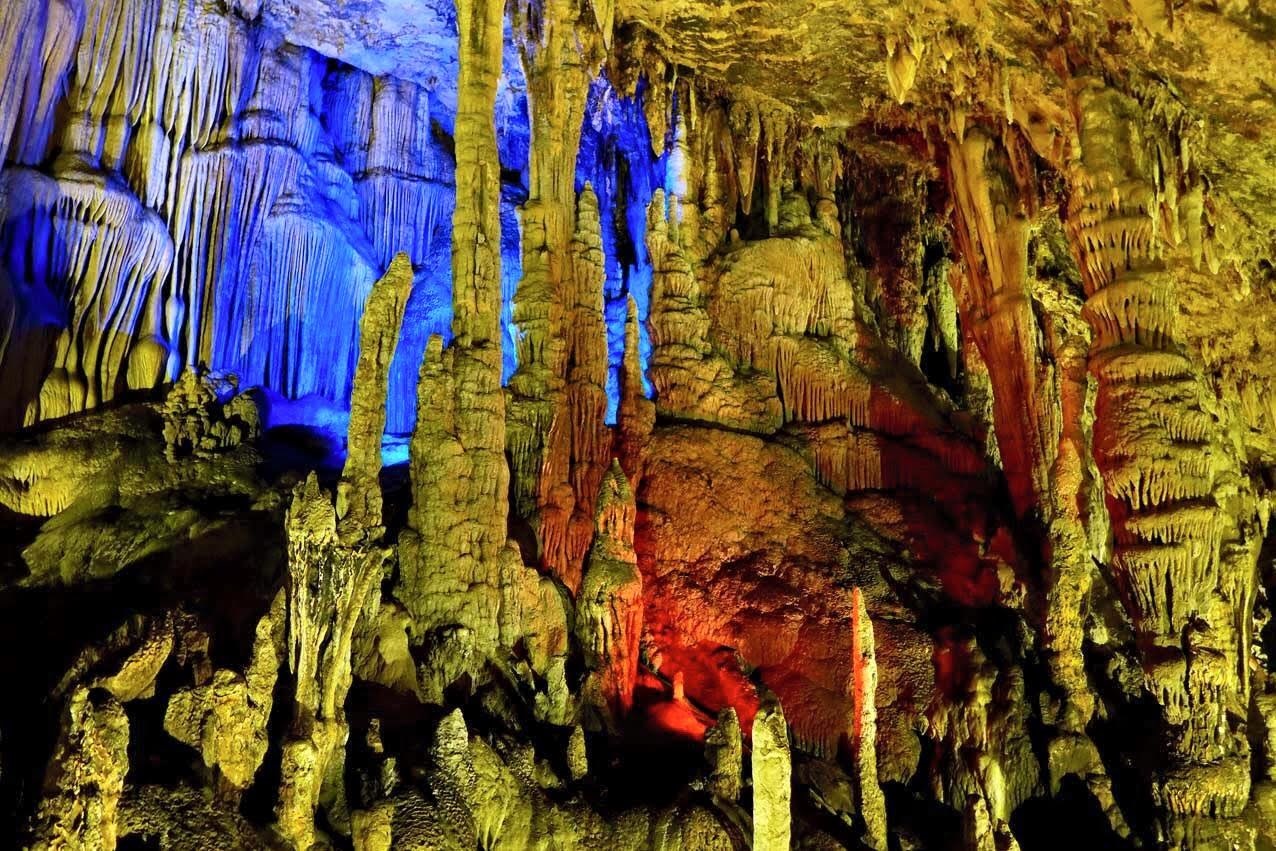
4.4 Nam Dam Cultural Tourism Village
Nam Dam Village is where the Dao community still preserves traditional lifestyles in the Quan Ba mountains. The earth-walled houses, yin-yang tiled roofs, and nature-close lifestyle create an authentic, rustic setting. Visitors can participate in ancient rituals such as the new rice ceremony or rain prayers – customs that express beliefs connected to earth and sky, preserved by villagers through generations.
Tourism in Nam Dam has developed based on a community model. Each household involved in tourism contributes to a common fund to preserve culture and improve living standards. When you stay at a homestay, enjoy a local meal, or buy handcrafted products, you’re contributing to efforts to preserve indigenous culture.
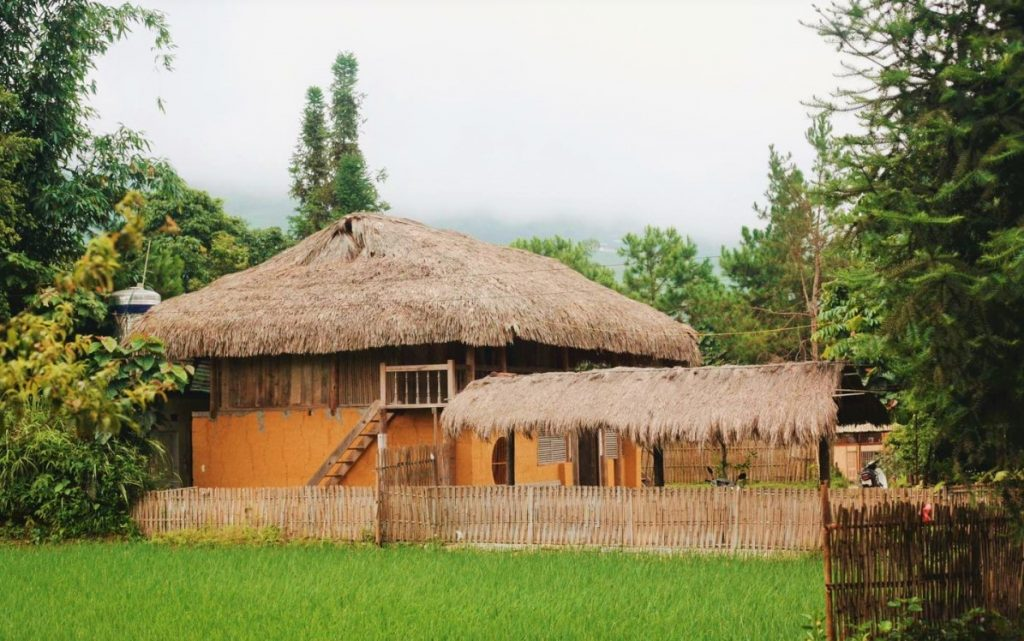
Ngôi nhà trình tường bằng đất trong làng văn hóa du lịch Nậm Đăm (nguồn: tripmap.vn)In Phieu Travel’s Ha Giang tours, the Quan Ba – Yen Minh journey is designed to take you through many spectacular stops besides the Lonely Tree, such as Quan Ba Heaven’s Gate and Lung Khuy Cave. Each point is logically arranged along the route. Accompanying local guides will share stories connected to each place, helping you feel the cultural depth of every location you pass through.
3 Days 2 Nights Ha Giang Loop tour package from Phieu Travel
5. Important Notes When Visiting Precarious Locations in Ha Giang
To have the most complete experience when visiting Ha Giang’s Lonely Tree, here are some tips you should know:
- If traveling by motorbike, maintain your vehicle thoroughly, check brakes, tires, lights, and bring an offline map. Prioritize experienced riders familiar with mountain roads, as there are many sharp curves and consecutive steep slopes.
- Wear comfortable, lightweight clothing and sports shoes for easy mountain climbing, walking, or photography.
- Bring a jacket to stay warm if traveling early in the morning or hunting for clouds at high altitudes.
- Prepare water and light snacks in case there are no shops along the way.
- Always keep your phone fully charged, bring a camera and power bank to avoid missing beautiful moments.
- If time allows, stop at Trang Kim to try the local pho favored by natives.
6. Other Famous Lonely Trees in Vietnam
Besides Ha Giang’s Lonely Tree, northern Vietnam and the country as a whole feature several other famous solitary trees:
6.1 Da Nang’s Lonely Tree
In Hoa Hiep Bac Ward, Lien Chieu District, Da Nang City, a solitary pine tree grows on Hai Van Pass. The tree stands at an angle, facing toward the sea, surrounded by layered mountains and expansive skies. The surrounding landscape is virtually free of artificial structures, preserving a unique natural pristine beauty.
To reach Da Nang’s Lonely Tree from the city center, travel toward Hue to ascend Hai Van Pass. After crossing the pass summit, continue downhill for about 5 minutes until you spot the prominent pine tree by the roadside. The ideal time to visit is at sunrise or sunset, when the soft light filters through the branches, creating a serene and poetic landscape.

6.2 Lao Cai’s Lonely Tree
Lao Cai’s Lonely Tree stands along O Quy Ho Pass in Son Binh Commune, Tam Duong District. The tree stands silent amidst layers of white clouds and undulating mountains, presenting a calm demeanor rarely found elsewhere. Its canopy reaches gently toward the hillside, as if merging with the open space of the Northwest highlands. From here, you can gaze across the entire O Quy Ho Pass and watch wisps of clouds drifting past the mountainsides.
To reach the Lonely Tree, start from Sa Pa town center and follow National Highway 4D toward O Quy Ho Pass. After about 15 to 20 minutes conquering the winding mountain road, the silhouette of the Lonely Tree will gradually appear, misty amidst a sea of fog. This spot attracts many visitors for check-ins each year.

6.3 Son La’s Lonely Tree
Amidst the floating sea of clouds on Wind Peak in Ta Xua Commune, Bac Yen District, stands a solitary ancient crab apple tree. The tree is located at the Xim Vang – Hang Dong junction, right on the mountainside, with a gently winding river below flowing through the Northwest’s rocky forest. Though not tall, the tree’s presence creates a special focal point amidst the majestic mountains.
From Ta Xua commune center, travel toward Suoi Sap Hydroelectric Plant. When you reach Dolphin’s Nose viewpoint, continue for about 1km until you find a small path on the right. This trail leads to the Lonely Tree. The path isn’t long but has steep sections and rough rocks, so prepare carefully.
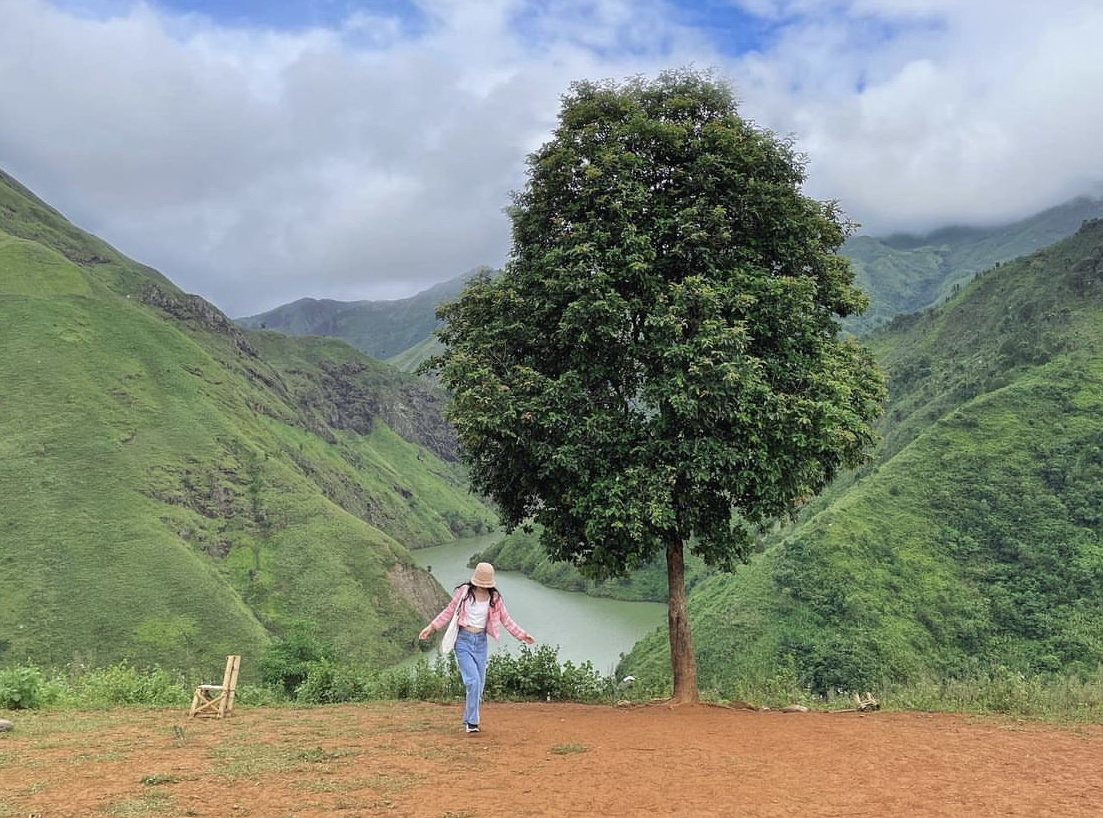
6.4 Bac Giang’s Lonely Tree
Bac Giang’s Lonely Tree is an ancient kapok tree standing in the middle of fields in Tan My Village, Lang Son Commune, Yen Dung District. Every March, the tree blooms with bright red flowers, standing out against the green backdrop of young rice and the spring sky. The tree’s sturdy form amid the vast fields, its red color like a flame in the peaceful landscape, evokes different emotions in each traveler.
The route to this Lonely Tree is relatively easy, without many passes or slopes. Start from Bac Giang city center and follow Provincial Road 293 toward Yen Dung. When you reach the Thuong River bank, look for “Ba Co Temple kapok tree” to locate the exact position. The best time is early March, in the early morning, when gentle sunlight shines through the tree canopy, creating a clear scene perfect for photography.
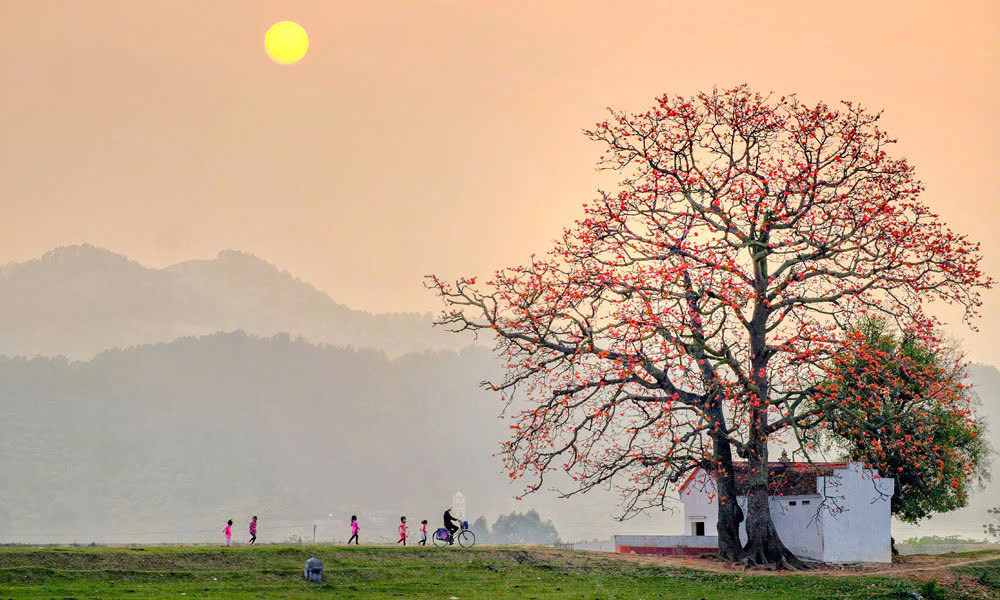
Above is information about Ha Giang’s Lonely Tree – a famous check-in spot on the rocky plateau. Since it’s located on a new route, carefully check your itinerary to avoid missing it. Also, remember the notes Phieutravel.com has provided in this article to make your trip safer and more complete!
Read more:
- H’mong People in Ha Giang: Traditions, Life & Travel Tips
- Dong Van Karst Plateau Travel: What to Do, When to Go and Must-Visit Places
- Top 8 Ethnic Markets to Visit in Ha Giang, Vietnam
- Is There a Ha Giang Airport and How to Reach Ha Giang by Air Travel

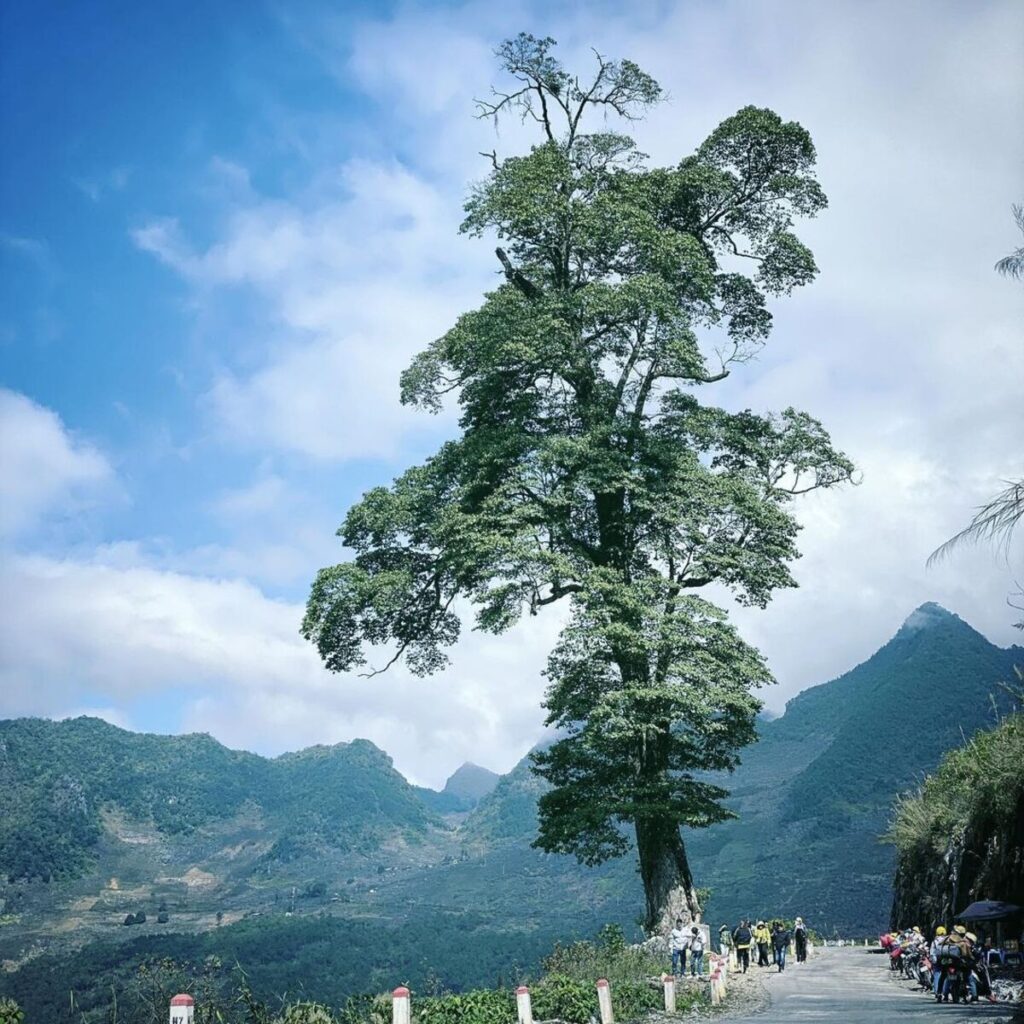
You Might Also Like
Ha Giang Weather in September: Complete Guide for Travelers
Exploring the magnificent Ha Giang Loop in September offers travelers a perfect balance of favorable[...]
Quan Ba Twin Mountains: Ha Giang’s Iconic Fairy Hills and Complete Travel Guide
The mystical Quan Ba Twin Mountains rise from the emerald valleys of Ha Giang like[...]
Vuong family mansion: the architectural marvel and cultural legacy of Ha Giang
Deep in Vietnam’s northern highlands, where mist-shrouded mountains meet terraced rice fields, stands a testament[...]
Ha Giang Loop Safety Tips: How to Ride Securely in Vietnam’s Northern Mountains
The Ha Giang Loop, with its winding mountain roads and breathtaking landscapes, offers one of[...]
The Ultimate Guide to the M-Shaped Curve on Ha Giang Loop
Vietnam’s remote northern province of Ha Giang hides a natural wonder that has captivated adventurous[...]
Most Beautiful Places to Visit in Vietnam: Essential Destinations and Insider Tips
Vietnam captivates travelers with its stunning landscapes, rich cultural heritage, and warm hospitality. From mist-shrouded[...]
Beyond the Beaten Path: Discovering Ha Giang Province in Northeast Vietnam
Ha Giang Province in Northeast Vietnam stands as one of the country’s last frontiers for[...]
Rainy season in Ha Giang: what to expect, when to go, and travel tips
Vietnam’s northern frontier reveals a different face during the rainy season, transforming Ha Giang’s limestone[...]